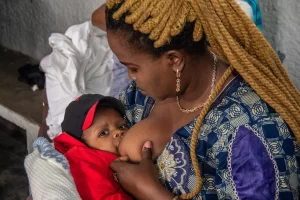CLAIM: The informal sector in Zimbabwe is rated at 64% by the multinationals second only to Bolivia 🇧🇴
SOURCE: Busisa Moyo
VERDICT: Partly true
Zimbabwean businessman, Busisa Moyo, was engaged in a social media debate on the country’s informal sector and its impact on formal businesses.
Commenting on the closure of a branch of a big chain supermarket, he said, ‘Formal businesses struggling to stay in the game because of informalisation & weak bye (sic) law enforcement’.
He further claimed that ‘The informal sector in Zimbabwe is rated at 64% by the multinationals second only to Bolivia 🇧🇴 let’s be serious about magnitude’.
An informal economy (informal sector or shadow economy) is the part of any economy that is neither taxed nor monitored by any form of government.
The International Labour Organisation (ILO) defines the informal sector as all economic activities by workers and economic units that are not covered or sufficiently covered by formal arrangements at law.
|
Formal arrangements include adherence to contracts in business transactions, applying labour regulations, social security contributions, banking proceeds, paying requisite taxes and council levies, and following legal channels on importing and exporting goods.
Informality means a lack of (i) social protection, (ii) rights at work, and decent working conditions; and for enterprises, it means low productivity and lack of access to finance.
Some of the sector sub-sectors where informality is high include: (i) Retail; (ii) Distribution; (iii) Foreign currency informal/parallel/black market and (iv) Services- parallel structures running close to formal establishment
According to World Economics, the size of Zimbabwe’s informal economy is estimated to be 64.7% which represents approximately $73 billion at GDP PPP levels.
The Zimbabwe National Chamber of Commerce quotes a slightly different percentage figure, stating that ‘The size of Zimbabwe’s informal economy is estimated to be 64.1% which represents approximately $42 billion at gross domestic product (GDP) purchasing power parity (PPP) levels’.
The GDP PPP levels are widely different, though.
In 2018, the International Monetary Fund published a report, Shadow Economies Around the World: What Did We Learn Over the Last 20 Years?” in which 158 economies were studied. In this study, Zimbabwe, with a score of 60,6 percent, came second to Bolivia which topped at 62,3 percent.
World Economics in its latest data, places Zimbabwe second to Afghanistan. Bolivia is now in fifth place with 55%. Afghanistan tops the list with 73.6%, followed by Zimbabwe at 64.7%. Nigeria and Haiti complete the top five at 58.2 and 55.5%, respectively.
Informal sector vs informal sector employment
It should be noted that the informal sector percentages mentioned above do not refer to the number of people employed in the informal sector
Zimbabwe being home to one of the world’s largest informal economies, has about three-quarters of all employment in the informal sector. Most of those informally employed work without formal contracts in low-earning activities and without social insurance benefits.
Approximately 34% of all informal workers are considered to be extremely poor. Workers in the informal sector lack legal recognition; secure contracts; worker benefits and social protection.
According to Zimbabwe Statistics (ZimStat), as at the end of the 2024 first quarter, informally employed persons constituted 86.4% of all employed persons. In comparison, in 2022 the percentage of informal employment in Bolivia stood at 83.7 percent of the total employed population.
Conclusion
The claim that ‘the informal sector in Zimbabwe is rated at 64% by the multinationals second only to Bolivia’, has been rated as partly true. The latest data does show that Zimbabwe’s informal sector stands at around 64% – 64.7% by some counts and 64.1% by others. However, Bolivia no longer leads in this. Zimbabwe is still second, but to Afghanistan, and not Bolivia as was the case in 2018.











